How-To Guide: Spring Edition
Time to spring into action with these How-To articles presented by our local businesses
How-To
Keep Your Lawn Looking Green
Homeowners' fasciation with a lush, green lawn is something that has developed over time and is still "growing" strong. According to a 2019 survey conducted on behalf of the National Association of Landscape Professionals, 81 percent of all Americans had lawns and 79 percent said a lawn is an important feature when buying or renting a property.
Even though lush lawns are still coveted, due to drought, the financial climate and even invading insect populations, many people are taking inventory of their landscapes and deciding if a lawn is a priority, even going so far as to reinvent their spaces with lawn alternatives. Still, there are ways to keep properties green no matter which route is taken. Here's a look at some environmentally friendly ways to address a landscape.
Irrigate from below
There are many ways to water landscapes, but homeowners may want to take their cues from the commercial farming industry. Drip irrigation systems utilize a network of valves, pipes and tubing close to the roots of plants or under the soil. Such systems are more efficient than surface irrigation options, helping to save water and nutrients in the soil.
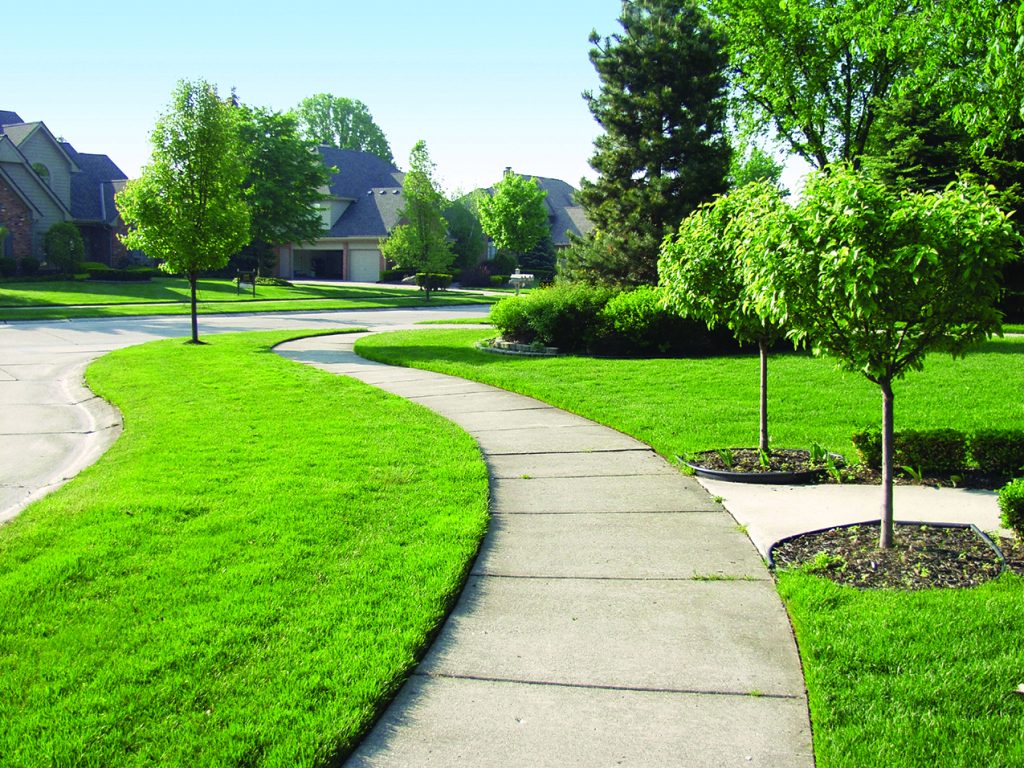
Water early
Scotts Lawn Care suggests watering a lawn in the morning before 10 a.m. when it is cooler and winds tend to be calmer. This ensures water can be absorbed into the soil and grass roots before evaporation occurs. Watering midday may cause the water droplets on the lawn blades to heat up and actually scorch the lawn.
Plant a new grass type
Homeowners can experiment with eco-friendly grass seed blends that mix native grasses and may not require as much water nor ideal growing conditions.
Utilize green alternatives
Rather than focusing solely on grass, some homeowners are turning to alternatives like clover and even moss, particularly if their landscapes do not have the most pristine growing conditions. This may reduce the need for chemical fertilizers and herbicides. The result is still a green, inviting yard.
Watch the lawn height
Mowing too frequently or at too low a height may compromise the lawn's ability to thrive. Grass cut to the proper height develops a deep root system to better locate water and nutrients in the soil. That means homeowners may not have to water as much or as frequently. Taller lawns also shade the soil and the roots, reducing some evaporation.
Compost
Leave the clippings on the lawn to break down and further feed nutrients to the lawn, helping it look greener and thrive. Furthermore, rely on supplementation with compost to reinforce the nutrient profile in the soil. The National Resources Defense Council says composting is the natural process of recycling organic matter, such as leaves and food scraps, into a valuable fertilizer. It doesn't take much to nurture compost in a yard.
Green landscapes are possible with a few tips that help conserve water and maximize natural resources.
How-To
Furnish Your Dining Area
Modern homes look a bit different than those of generations past. Rather than several small rooms divided by walls, modern homes offer open-concept floor plans. That means the boundaries between spaces are not so defined, allowing rooms and activities to blend into one another.
Formal dining rooms may or may not be part of the current home layout with regard to new construction. Many homeowners now gravitate toward kitchens with adjacent breakfast nooks that utilize large islands with stool seating that open up to family rooms. These layouts can make it more challenging for homeowners to figure out how to furnish their dining areas - however casual or formal they may be. Individuals can use these tips as a springboard for selecting the right pieces in their homes, no matter where they enjoy their meals.
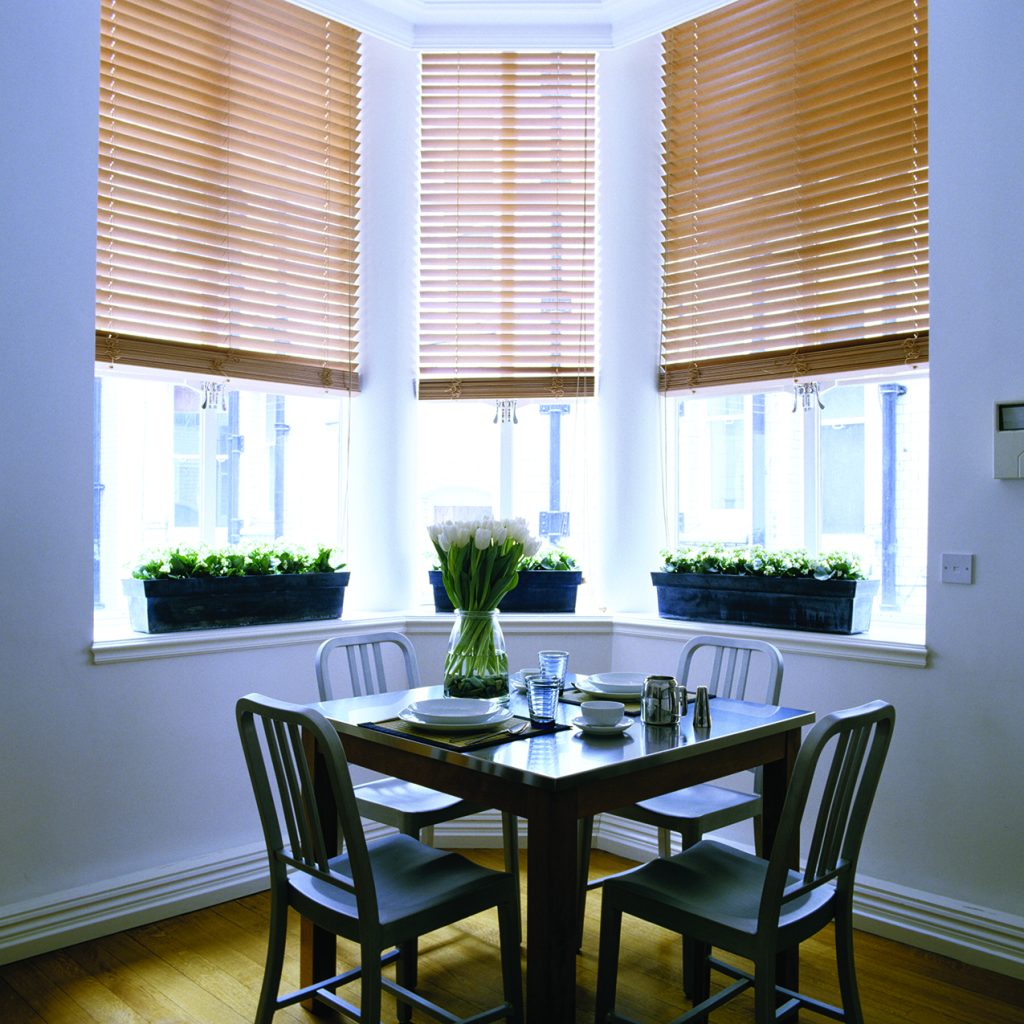
Consider the scope of the room
Is it a dining room or a dining area? This will help determine décor and the formality of the pieces of furniture needed to outfit the room, according to The Spruce, a home renovation resource. If the room is a multi-purpose space, consider furniture that can serve different purposes, such as a table that has fold-down portions to change its size depending on the number of people dining at a particular time. You may want to include an armoire to store linens and stash away pens and note pads for making shopping lists.
Dining table
The dining table is the foundation of a dining area. After all, people need to have somewhere to sit and eat. Remember to measure the dimensions of the room carefully, as furniture can look much smaller in warehouse stores or furniture showrooms than in a home.
Consider a round or square dining table, which tend fit into rooms more easily than rectangular tables. Plus, these shapes are more conducive to conversation. Rectangular tables often leave people at the ends out of the chat.
Seating
Seating can affect the ability to move around the room. If space is at a premium, some narrow-profile chairs are a better option than larger, upholstered wingbacks. Homeowners may consider a wooden or upholstered bench on one side of the dining table to maximize seating during family events.
Lighting
Pottery Barn suggests using a mix of lighting sources to create the right lighting needs in the space. Floor lamps, an overhead chandelier, wall fixtures, and natural light need to blend and be adjusted as needed. Also, choose an overhead chandelier that complements the shape of the dining table. For example, a round fixture will look best above a round table.
Rug
An area rug can help define the dining space and set it apart from other areas in an open-concept home. An area rug also adds warmth and color when a wood table meets a wood floor; otherwise, it may look too stark.
Homeowners must take various factors into consideration when decorating a dining room. Size, purpose and style are just some of the things that merit ample consideration before furnishing a dining space.
How-To
Keep Pets From Causing Home Fires
Pets can be excitable. Though dogs anxious to get outdoors and play with their owners may be the first image of excited pets to come to mind, cats also can be compelled to move quickly when they hear sudden, loud noises or if they're startled by visitors.
Excited pets can pose a safety hazard in homes where open flames are commonplace. In fact, the National Fire Protection Association estimates that around 1,000 home fires each year are started by pets. Pet owners can implement strategies recommended by the American Kennel Club and ADT Security Services to reduce the risk of fire in their homes.
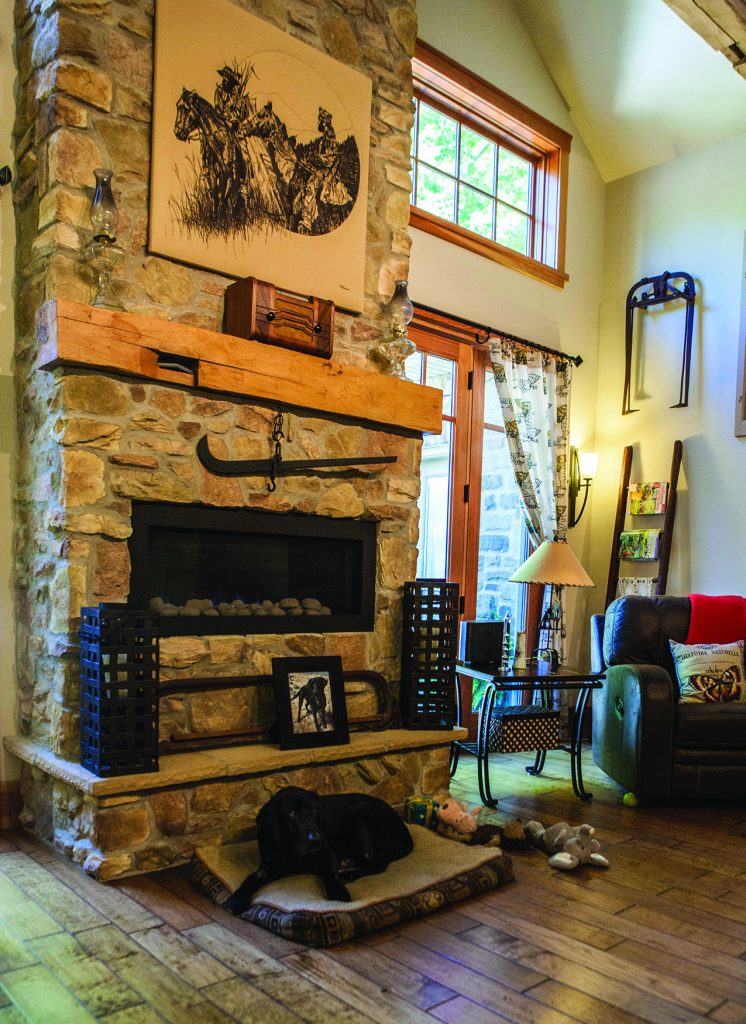
Extinguishing flames in fireplaces when pets are in the room can reduce the risk of home fires.
· Be especially careful around and mindful of open flames. Pets can easily tip over candles and gain access to fireplaces when open flames are burning. Extinguish such flames whenever leaving a room, or ask someone to come in and look after pets so they are not left unattended around flames. Even candles on fireplace mantels pose a hazard as curious cats can leap onto mantelpieces and tip over the candles.
· Cover stove knobs. Stove knobs are another potential fire hazard in homes with curious pets. Knob covers prevent pets from accidentally turning on burners when no one is looking. Pet owners who let their pets roam free around the house while they're at work or out running errands should cover stove knobs before leaving their homes.
· Purchase flameless candles. Flameless candles are a great option for pet owners whose pets are energetic or especially curious. Flameless candles are battery-powered and provide ambient light without an open flame.
· Consider crating pets or limiting access to certain areas if animals are not yet house-trained. Puppies and kittens are especially curious and eager to explore their new surroundings. That makes it easy for them to find trouble even in areas where pet owners think there isn't any. Confine pets to crates during times of day when you plan to light candles or the fireplace or install gates to keep them out of rooms where they can access open flames.
· Exercise caution when using a grill and/or firepit. Charcoal grills and firepits are not indoors, but they can still pose a fire hazard outside. If necessary, keep pets indoors when grilling or sitting around the firepit. If you want them to be outdoors at these times, prevent them from accessing areas where the grill and firepit are located.
Pets tend to be curious, and that curiosity can be dangerous around open flames. Some simple tips can reduce the risk of home fires caused by pets.
• Search by date. For example birth year of you or family members.
• Search for quarters by state, some are getting harder to find.
• Lincoln Cents 1958 and prior have a wheat reverse.
• 1964 and prior Dimes, Quarters & Half Dollars are made of 90% silver.
• 1965-1970 Half Dollars are 40% Silver.
• You can also obtain a coin album, which has a slot for every year the coin series was issued.
If you have any questions or would like to trade, sell or upgrade your collection, stop in today or give us a call at 267-372-4348
How-To
Keep Young Athletes Healthy
After COVID-19 waylaid sports participation and other activities, young athletes have returned to competitive athletics in droves. The most recent data from the Sports & Fitness Industry Association says 37 percent of children between the ages of six and 12 played team sports on a regular basis in 2021. At the highest point in 2008, 45 percent were involved in sports. According to various youth sports participation surveys, including those from the Aspen Institute and TeamSnap, children between the ages of six and 18 spend an average of 16.6 hours each week playing sports.
With so much time devoted to sports participation, everyone involved can take steps to ensure that young athletes are safe and healthy during practice and play.

· Encourage rest. Pushing the body to the brink without routine rest is a recipe for injury. Rest provides recovery time for muscles and joints as well as the mind. Athletes can aim for at least one day off from the sport per week. After the season ends, children can take an extended break before beginning a new sport.
· Eat balanced meals. Families can plan balanced meals that will provide the nutrition young athletes need to fuel their bodies. With increased physical activity comes a need to eat more. The International Olympic Committee says nutrients such as vitamin D, calcium and iron are essential but often lacking in youths with restrictive diets. A young athlete should eat plenty of complex carbohydrates, healthy fats, protein, and vegetables.
· Encourage variety. MedlinePlus reports that many young athletes are engaging in "single-sport specialization" early on, focusing only on one sport, even during offseasons. Repetitive use of joints, bones and muscles for these sports can cause various injuries. To prevent that, young athletes should participate in a variety of sports and training exercises.
· Wear the right gear. Athletes always should wear the safety gear required for the sport they're playing. This may include eye protection, helmets and more.
· Discourage young athletes from playing through pain. Pressing on through pain or an injury is a recipe for damage that could keep a player out for the season or even permanently. Young athletes shouldn't try to be heroes and play through pain.
· Alleviate mental pressure on athletes. Many young athletes throw themselves entirely into sports, perhaps at the expense of having more well-rounded childhoods. The National Federation of State High School Associations says only around 2 percent of high school athletes are awarded some form of athletic scholarship to compete in college, and fewer than 2 percent of NCAA student athletes go on to play professionally. Putting all of one's eggs in the sports basket can contribute to anxiety that stems from pressure to succeed. Keep the emphasis on fun so young athletes don't feel pressured.
· Avoid performance-enhancing substances. Caffeine, anabolic steroids, steroid precursors, creatine, and stimulants are substances athletes use to boost performance. They can cause many health issues and even lead to addiction.
Young athletes can take many steps to stay healthy without affecting how much they enjoy the thrill of competition.
How-To
Create an Outdoor Living Retreat
Al fresco entertaining has taken off in recent years. It's much more common today to find homeowners who want to extend living spaces to the outdoors in meaningful ways that go beyond a few lawn chairs and a stand-alone grill. Dream backyard living rooms mirror similar spaces indoors and contain features like cozy corners, lush furniture and televisions or movie projectors. Plus, they often abut additional outdoor luxuries like fully functional kitchens.
Homeowners have various options when designing outdoor living spaces. Above all else, spaces should be created with the goal of encouraging people to get together. Here are some ideas.
Poolside retreat
Homeowners with pools and other water features likely want this area to be the star of the entertaining space. Furniture will be more of the lounging variety, with comfortable chaises and spots to catch the sun. If a swim-up bar isn't possible, a rolling bar cart can be stocked with essentials for cocktails or mocktails for the kids. Furniture near the pool will be exposed to a lot of sun, so look for durable, sun-resistant fabrics.
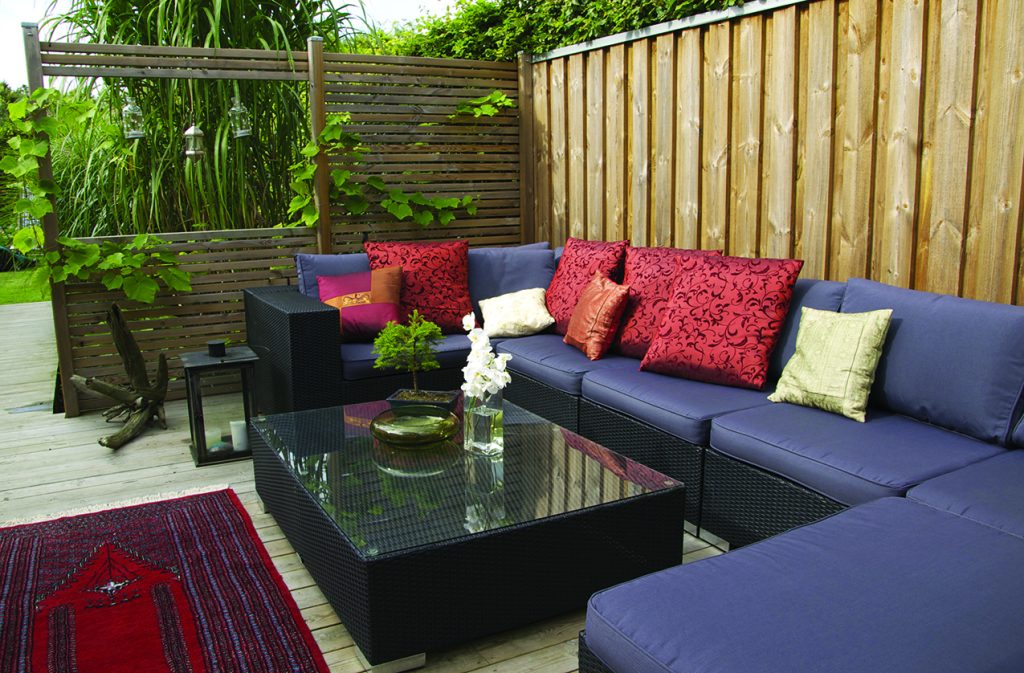
Fireside nook
Gathering around an outdoor fireplace or fire pit is a treat when the weather cools down. Mirror the look of the same setup indoors by arranging outdoor sofas so they flank the fireplace. Add some ottomans or side tables for stowing mulled cider or hot chocolate. A mantel above the fireplace can hold pots of greenery or candles that add to the ambiance.
Consider a custom banquette
Unused corners on a patio or rooftop retreat can utilize a custom-made banquette that provides the functionality of a sofa sectional outdoors. Have a contractor design it to the exact specifications of the area, and add a rug to ground the space.
Vary the flooring
Depending on the entertaining space, a balance of soft grass, pavers or other hardscape will be necessary. Certain areas will need to be hard enough for chairs and other furniture, particularly for those who are including an outdoor dining table in the design.
Create some privacy
Some homeowners are lucky enough to have natural barriers that offer privacy in their entertaining spaces. When there isn't enough, tall shrubs, inexpensive bamboo fencing or trellis can provide a blind that makes an outdoor living area more cozy and private. Consider placing tall, potted plants on rolling casters to improve privacy as the need arises.
Outdoor living spaces are all the rage, and they can add value and functionality to most any home.
How-To
Create More Privacy on Your Property
An inviting backyard can serve as a welcome retreat from the hustle and bustle of daily life. After a long day at the office or an exhausting day spent transporting kids to and fro, it's hard to resist the allure of a peaceful outdoor space in which to unwind.
Privacy is a key component of any backyard oasis. Some homes may be so remote that privacy isn't an issue. But many suburban homeowners recognize they might need to tweak their landscapes if they hope to create a private oasis outside.
Fencing or planting?
Most homeowners looking to create more privacy on their property will have to choose between fencing and planting. Fencing provides immediate privacy because, once it's installed, no one can see into the yard. Fencing also doesn't require watering or other immediate upkeep, which will be necessary when planting to ensure tree roots can establish themselves.
But planting has its benefits as well. Planting for privacy is essentially creating a living fence that can grow over time and provide even more privacy as trees reach maturity. Plants also tend to be less costly than fencing. The home renovation experts at BobVila.com estimate that fencing projects typically cost between $1,667 and $4,075. However, fencing projects can cost considerably more than $4,000, especially for homeowners with large properties they want to enclose. Large, mature trees can be expensive, though it's unlikely they will cost as much as fencing. In addition, fencing requires more maintenance and will potentially need to be replaced, while native trees won't require much upkeep and can last for generations.
Planting
Homeowners who choose to plant for privacy will next have to decide which type of plants to add to their properties. Evergreens provide year-round privacy because they don't shed their leaves, so these are the ones most often chosen when creating a living fence. A number of varieties of evergreen trees can do the job, but it's important that homeowners consult with a landscape architect prior to choosing trees so they can ensure the trees will thrive when faced with the growing conditions on their properties. During such a consultation, homeowners may discuss the following popular privacy trees.
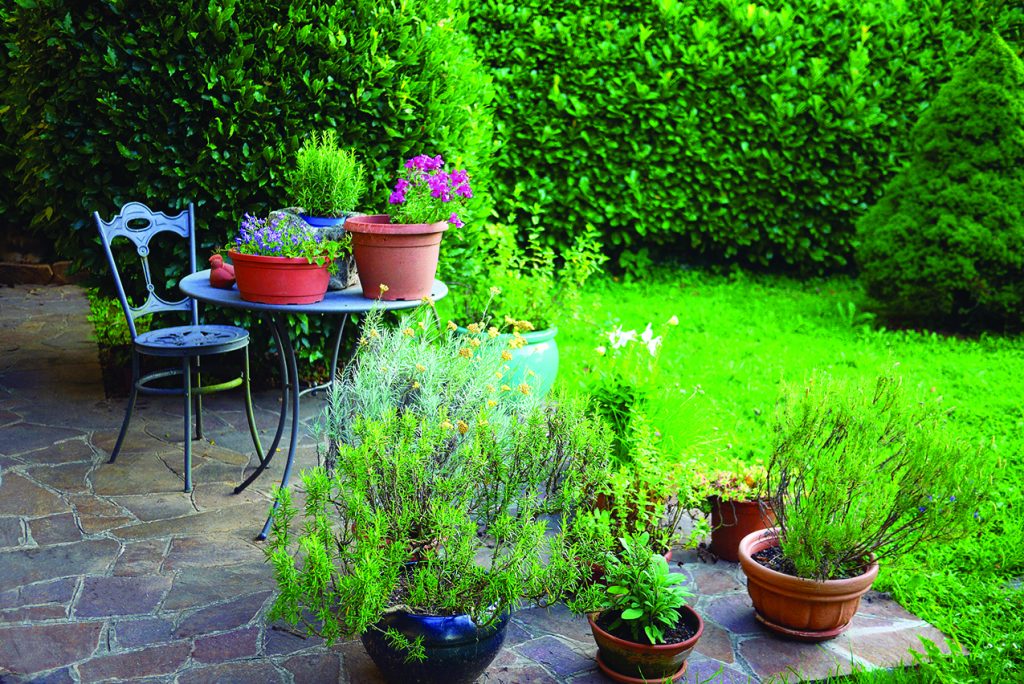
· Leyland cypress: The Arbor Day Foundation® notes that the Leyland cypress is popular for hedges and boundaries, likely because a typical tree reaches a mature height of 60'-70' and can spread as wide as 25'. The Leyland cypress grows fast, which may appeal to homeowners who don't want to wait to establish privacy.
· Green Giant Arborvitae: There are different varieties of the arborvitae, but the Green Giant tends to be the go-to option for privacy. The ADF notes that Green Giants will grow up to three feet per year until they reach maturity, providing a fast-growing option for privacy planters. The Green Giant can spread as wide as 20 feet at maturity, which is another attribute that makes it so popular among homeowners desiring privacy.
· Eastern White Pine: The ADF notes that the eastern white pine, which can reach heights as high as 80 feet, is favored in spacious yards. That's likely due to its height and its potential spread, which can reach 40 feet. Homeowners who choose the eastern white pine might like it for its resemblance to a Christmas tree, and in fact it is widely used for that purpose. The privacy provided by the eastern white pine is significant, but it might be best suited to especially large properties.
Whether it's fencing or planting, homeowners have many options to consider as they seek to create more privacy on their properties.
How-To
Keep E-waste Out of the Landfills
Did you know improperly disposed e-waste materials is toxic, not biodegradable and fills the landfill with high levels of contamination. The best way to get rid of e-waste is to recycle it. At Perkasie PC Repair and Recycling we can take all your e-waste, computers, printers, stereos, radios and so much more for FREE!!!! We also take tv’s and monitors which require a very small fee (look for the $5 off coupon in Penny Power). Load up your car and bring your e-waste to us instead of the landfill.
How-To
Use Pallets for Household DIYs
In recent years, the trend of upcycling, or transforming unneeded or unwanted materials into new items or products, has become more popular. Unlike recycling, which is taking consumer materials like plastic, paper, metal, and glass and breaking them down so base materials can be remade into new, lower-quality consumer products, upcycling produces items of a higher quality than the original materials.
Wood pallet projects are an excellent example of upcycling. Such projects involve taking wood pallets, which tend to be used to stack, move and store stock, and turning them into amazing wood products. Often free for the taking, pallet wood has become a popular building material for do-it-yourselfers. This rustic wood already has an aged look and decorative appeal. Pallets are often made from leftover wood, and using them anew is an eco-friendly endeavor that can add flair to any project. The following are just a handful of pallet project ideas.
· Christmas trees: Start thinking ahead to the holiday season. Cut pallet planks into sizes that incrementally get larger and attach to form a triangular Christmas tree shape. Decorate with paint or other accents, and don't forget to place a star on top.
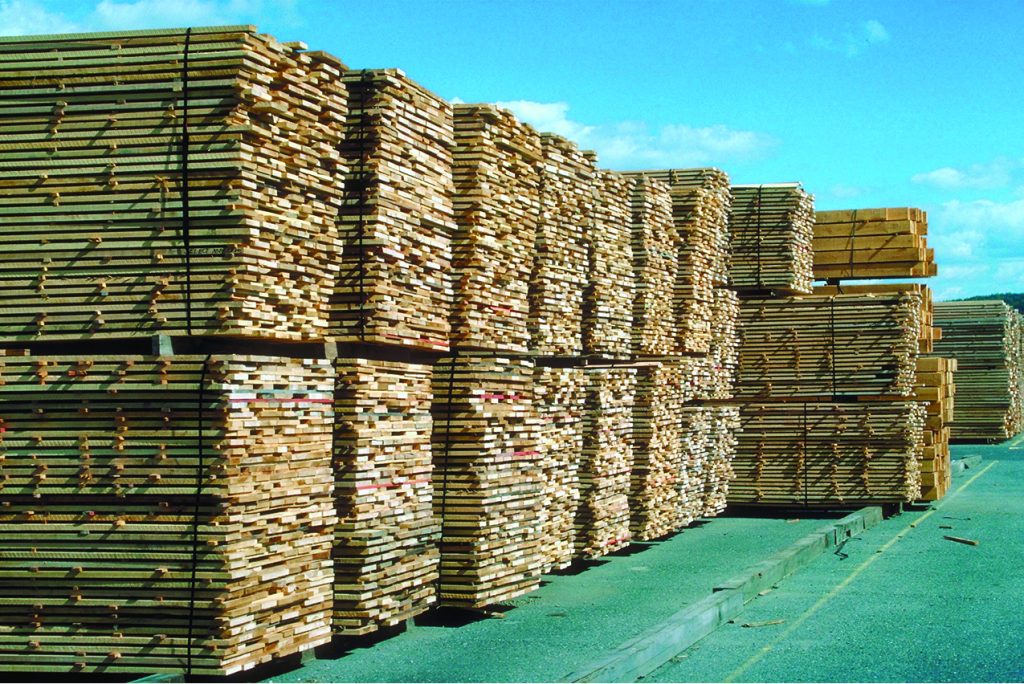
Do-it-yourselfers can skip purchasing wood boards and upcycle wood pallets instead.
· Pallet planter: Make a planter box as big or as small as you like to grow flowers, vegetables or herbs. A narrow planter also can be hung on a wall to add flair to spaces indoors or outside.
· Swing chair: A pallet, a supportive back and some cushions can be used to make a swing that is fastened to the ceiling of a porch or even a tree.
· Wine rack: Turn pallet wood into a wine rack that also has a space to store wine glasses below it.
· Outdoor table: Top a disused table with pallet boards nailed or screwed to the top. Stain or clear coat them, and the result is a brand new table for gardening use or outdoor entertaining.
· Platform bed: Pallets can be sanded, painted and placed to form the base of a platform bed. Utilize more pallets to serve as a headboard attached to the wall or bed frame.
· Bench: Make a pallet bench that can be crafted child- or adult-sized. Use it inside the house or outdoors on a patio.
· Garbage container: Instead of generic plastic garbage pails, make a pallet kitchen garbage container that has rustic appeal.
· Backsplash: Give a kitchen some rustic appeal with a pallet backsplash. Cut boards into desired lengths and stagger on the wall. Leave the wood raw or seal it for protection against moisture.
Pallet wood can be transformed into many different projects, helping do-it-yourselfers stay busy at minimal cost. Go online to search for plans for building an array of pallet projects.
Home styles are as diverse as the people who live in the homes. Each design style has its proponents, but traditional style homes are among the most enduring designs. The popularity of traditional style homes has endured for centuries. And though homes built in the twentieth and twenty-first centuries might be vastly different from those constructed in the 1600s and 1700s, they still include characteristics of homes one might have found back in colonial times. But it's also important to note that the notion of "traditional" has changed, and some may now see homes built more than 50 years ago as traditional. That's an important distinction to keep in mind when working with contractors and interior designers, as homeowners who prefer traditional should not hesitate to share how they define that style.
As individuals shop around for new homes or seek inspiration before redesigning their existing spaces, they can consider these hallmarks of traditional-style homes.
· Architectural details: Certain architectural details also are commonly found in traditional-style homes. Wainscoting and crown molding, which harken many back to the style's centuries-old roots, are some hallmarks of the traditional style.
· Classic decor: It might be an oversimplification to suggest modern and traditional are at opposite ends of the design spectrum, but traditional-style homes lean on classical decor like chandeliers and bookcases, each of which is unlikely to be found in a modern home.
· Color: According to the home renovation experts at HGTV, traditional-style homes are not typically associated with the muted color palettes common to more modern design schemes. Traditional styles utilize color throughout the home, and each color of the rainbow can be utilized if individuals so desire. Though neutral colors are found in traditional-style homes, Architectural Digest notes they are typically accompanied with pops of bold colors in jewel tones.
· Defined spaces: Open concept floor plans have become very popular in recent years, but traditional-style homes do not feature open floor plans. Living rooms and dining rooms (which are used exclusively as dining rooms) are defined spaces in traditional-style homes, which also tend to have all bedrooms on the second floor or higher.
The traditional design style has endured for centuries. That serves as a testament to the appeal of a style that will seemingly always have a place to call home.
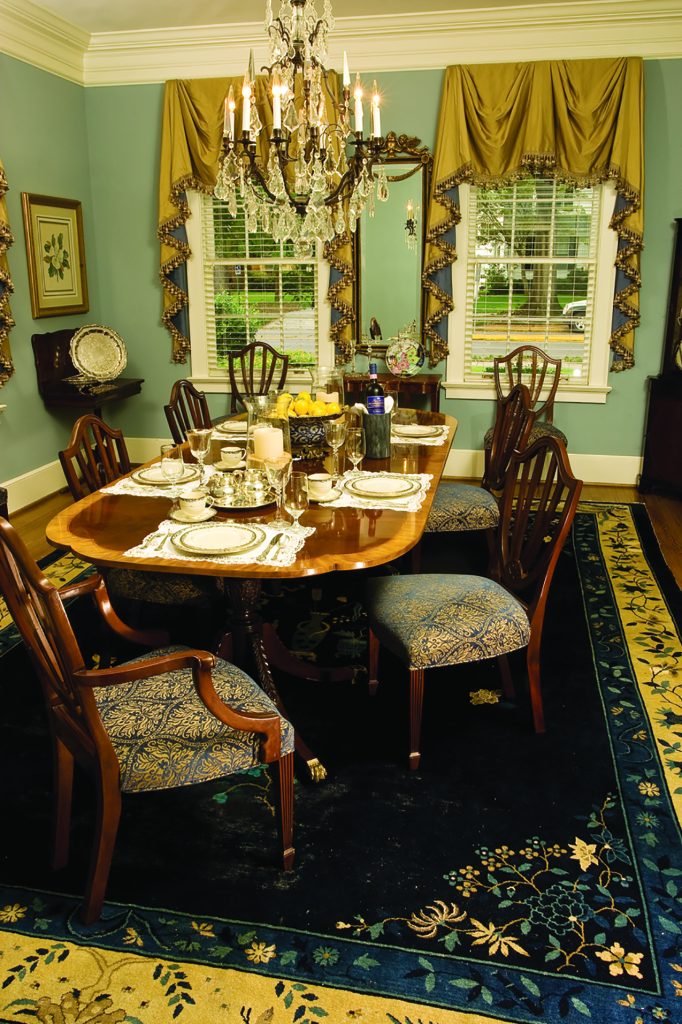
How-To
Sell Your Home to Get Top Dollar
The process of buying and selling a home includes many movable parts. North America has experienced historic trends in the housing market in recent years. Most notably, record-high prices have dominated the real estate market over the last several years.
High prices are good news for sellers, who can probably anticipate receiving offers above listing price. In New Jersey, inventory is so low that 12.5 percent of homes in the Garden State sold above list price, according to data from RedFin. This is good news for sellers currently looking to make an excellent profit on their properties. Sellers who don't want to rely on the market alone to earn more for their homes can take various steps to get top dollar.
Stage your home
According to the 2023 Profile of Home Staging conducted by the National Association of Realtors®, 81 percent of buyers' agents said staging a home made it easier for the buyer to visualize the property as a future home. Focus your attention on the living room, owner's suite and kitchen. Hiring a staging professional can be an investment that turns a sizable profit.
Know your local market
A good way to price your home and gauge if it will sell quickly is to look at the average "days on the market" for similar homes nearby. If homes are selling faster than the average DOM, that suggests high demand, which can work in your favor.
Make added-value improvements
Focus renovation dollars on the types of projects that will reap the highest return on investment. Remodeling magazine annually reports the projects that offer the best ROI. In 2023, the project that reaped the highest ROI was an HVAC Conversion/Electrification, which involved converting a fossil-fuel-burning furnace into an electric heat pump. The cost recouped was 103.5 percent.
Sell at the right time
Fewer people are shopping for homes in the dead of winter or during the middle of the school year, so putting your home on the market in spring typically brings out the largest number of interested parties, according to Opendoor. But this isn't the only time-related factor to consider. To sell for the most money, you want to list your home when you have enough equity to pay off your current mortgage, the costs of selling, and the costs of moving, says Bankrate.
Give curb appeal a boost
Make sure that buyers see your home in a positive light from the first moment they pull up for a walk-through showing. According to Home & Garden, improving the landscaping can result in a value increase of up to 12 percent. Additional projects can include investing in a new front door and garage doors. Be sure that hedges are trimmed, there are fresh flowers growing, and that walkways and the driveway are clean and tidy.
A few simple strategies can help sellers get more money for their homes.

How-To
Find Home Care for Veterans
Homewatch Caregivers of Quakertown has the home support you have been looking for veterans. There are easy steps to follow to see if you qualify for care with decisions made in less than a week.
Once approved, Homewatch Caregivers of Quakertown can assist you with:
- Light Housekeeping & Laundry
- Meal Planning & Preparation
- Transportation & Companionship
- Help Dressing & Grooming
- Help Showering & Getting Ready
- Appointments & Medication Reminders
All while you age or recover safely in place while recovering from a procedure or illness.
Ready to learn more?
Call
Homewatch Caregivers at Quakertown
at
484-209-0562
We are located at
328 West Broad St.,
Quakertown, PA 18951
Visit us online at
www.homewatchcaregivers.com/quakertown
According to the landscaping tool company Troy-Bilt, soil fertility is the foundation of healthy lawns. In fact, the quality of the soil is essential whether one is growing acres of grass, potted plants or vegetable garden beds. No matter which type of soil a homeowner is working with, there are various ways to make it better.
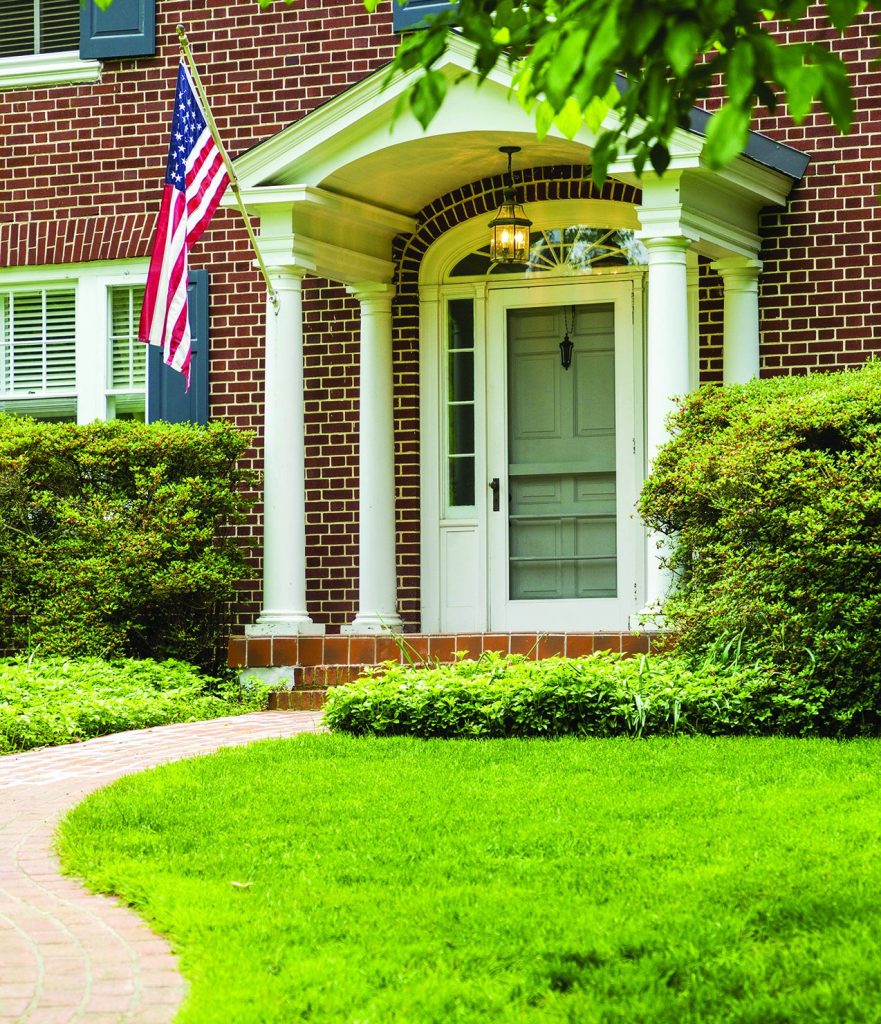
Remove thatch
Thatch is a tightly knotted layer of leaves, grass roots, stems, and other debris that accumulates between the grass blades and the soil. Too much thatch can hinder the movement of water, air and nutrients into the soil. According to organic fertilizer company Organo-Lawn, thatch often occurs if the production of dead organic material in the lawn exceeds the ability of the microorganisms in the soil to break down that organic matter. A half-inch of thatch is normal. If thatch gets too thick, it will need to be removed. The home improvement resource DIY Network says dethatching can take place in the summer, fall and winter using a thatching rake.
Aerate
A lawn aerator will create holes in the soil. This can improve drainage and encourage worms and helpful microorganisms that require oxygen to thrive in the soil. The Briggs & Stratton Company says the best time to aerate a lawn is during the growing season when the grass can heal and fill in any holes, such as spring and fall. Aeration can help develop deeper grass roots for a healthier lawn.
Test and amend soil
A great lawn has loamy soil, which has a key ratio of clay, silt and sand. Silt is a granular material of a size between sand and clay that originates from quartz and feldspar. It is the most fertile of the three types of soil components. Sand does not retain water, but it helps to create spaces in the soil that permit air to circulate. Clay particles are small and bind together tightly, but clay is naturally nutrient-rich. The home improvement site BobVila.com says loamy soil should have equal parts sand and silt and half as much clay.
If the lawn is not yet established, loamy soil can be created and then the grass seeds planted. For established soil, after removing thatch and aerating, top-dressing the lawn can help. This involves adding a thin layer of soil over the lawn. It can improve the soil without killing the existing turf. Ideally, it should be done in early fall or spring, as this gives the grass time to grow through three to four more mowings before severe heat or cold sets in.
Healthy soil is vital to a lush lawn. It takes a little work, but improving soil can create vibrant, healthy, green grass.
How-To
Organize Your Garage
Who doesn't have a space at home that serves as a catch-all for items that seemingly have no other home? For many, this storage wasteland where items go to be forgotten tends to be the garage. Before long, clutter can overwhelm the space and create an eyesore. Garage clutter also makes the space less functional by making it harder to park a vehicle or store equipment.
Organizing a garage takes work, but the end result can improve the appearance, free up space, make work more efficient, and make it easier to find and use tools more readily. Here are some ways to get started on organizing your garage.
Start with cleaning and culling
One of the first steps when organizing a garage is to thoroughly analyze what is needed and what can be removed from the garage. If items belong elsewhere, such as in a shed or the basement, move these items first. Discard damaged or broken items. Next, move on to tools or gear that hasn't been used in some time. Will you use it again? If the item has been collecting dust for years, you likely already know the answer to that question.
Pile all items in the driveway so you have a clean slate with which to start. Measure the room to figure out the dimensions so you'll know how much wall space is available for storage.
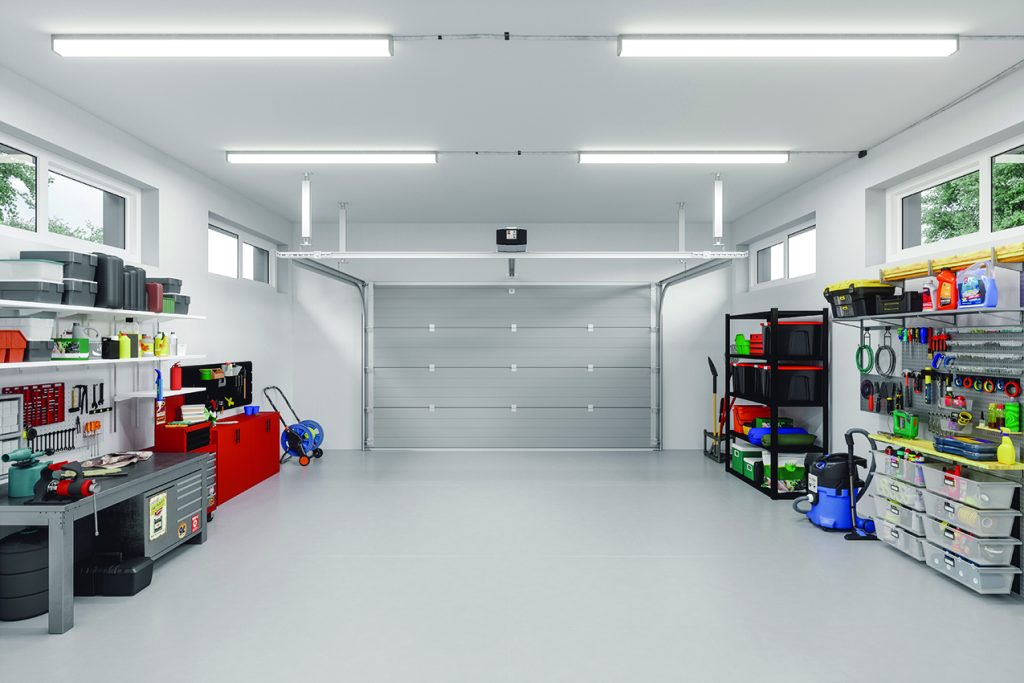
Free up floor space
The ultimate goal of a garage storage renovation is to make floor space available, according to Stacey Schweiger of Sunshine Organizing. Lifting items off the floor makes access easier, and protects items should there be a flood or leaks.
A combination of wall shelves, overhead shelves, cabinets, and wall hooks can help homeowners create more floor area. Organization becomes easier when everything has a designated space where it can be easily returned to.
Consider weight
When investing in shelving and racks, remember that many of the items stored in garages tend to be heavy. It's important to ensure that shelves and hooks are heavy-duty and able to withstand the weight of pressure put on them. Verify the maximum weight so that racks will not buckle or tip over and cause issues.
Utilize overhead space
Overhead storage can be reserved for items that aren't used frequently, such as seasonal decorations or luggage.
Out of sight
Some items should be stored out of sight and beyond the reach of children and pets. Cabinets and containers can be used and locked to secure materials, such as fertilizers, paints, solvents, and other chemicals.
Additional ideas
Magnets, pegboards, organization bins and systems, and similar products can be used to corral small or errant items like hand tools, fasteners and more.
Garage organization will take some planning and time, but the end result can be well worth the effort.
People who use their bedrooms as a work space may find they're compromising their well-being by introducing activities into the bedroom. The Sleep Foundation says having an office in the bedroom blurs the lines between work and personal life, which can have serious effects on sleep. Rather, people should be looking to turn their bedrooms into relaxing retreats that offer a respite from the outside world.
· Remove blue-light emitting devices. Computers, tablets, smartphones, and other electronic devices emit blue light, which can compromise natural melatonin production in the body that contributes to sleep. Such devices should not be used at night in the bedroom.
· Use a neutral color palette. Neutral color palettes evoke a spa feeling. Walls can be painted white, beige or a light shade of gray. This can help the room feel calming and welcoming.
· Declutter the room. A sense of calm can be achieved simply by removing excess clutter. There is some evidence that the brain is more calm near an empty dresser, desk or clothes hamper. Therefore, removing excessive items from the room is a first step to making a nice retreat.
· Add soft lighting. Adjust the intensity and the color of the lighting in the bedroom. It should be subtle and warming. Dimmers enable homeowners to adjust lighting as needed.
· Install an electric fireplace. There is something to be said for the relaxing effects of gazing into the flames of a fire. A crackling (faux-wood) fire is an added layer of indulgence in a bedroom.
· Add an area rug. Even in rooms with carpeting, an area rug under the bed can further define the perimeter of the bed and add extra plushness underfoot.
· Invest in aromatherapy diffusers. Certain smells can create a relaxing mood. These may be sandalwood, lavender or jasmine. Utilizing their preferred scents, homeowners can employ reed diffusers in their bedrooms to enjoy the aromas of natural oils.
· Used closed storage. Open shelves and visible closet interiors may not hide a mess. Exposure to clutter can contribute to feelings of anxiety. Store items that shouldn't be on display behind closed doors or drawers.
· Bring in luxury linens. Homeowners should not skimp on comforters, sheets, duvet covers, and pillows for their beds. A cozy bed to dive right into can serve as the centerpiece of a bedroom retreat.
Turning a bedroom into a relaxing space can help individuals sleep better and reduce anxiety.

Homeowners recognize that their work is never done. Homes require maintenance that runs the gamut from daily tasks like cleaning kitchen countertops to more significant undertakings like replacing roofs. For many homeowners, keeping their homes running smoothly involves tending to septic systems.
Estimates from various sources indicate that roughly one in five homes in the United States has a septic system. Homeowners who live in areas with regional sewage systems may not give much thought to the operation and maintenance of their wastewater and disposal system. But that responsibility typically rests squarely on the shoulders of homeowners whose homes have septic systems. Learning to maintain septic systems so they operate safely and efficiently is essential. Homeowners should know that recognizing signs of septic system malfunction is vital to avoiding potentially costly, messy accidents that can put the health of humans and local wildlife in jeopardy.
What happens when a septic system malfunctions?
The Washington State Department of Health notes that a malfunctioning septic system is a threat to the health of both humans and animals as well as the environment. When a septic system is malfunctioning, untreated sewage can be released and end up in places where it shouldn't be, such as groundwater, surface water and marine water. That's true even if it's not visible to the naked eye. Humans and animals are in danger when septic systems malfunction because untreated sewage contains pathogens and other contaminants that can make them sick.
What are the signs of a malfunctioning septic system?
The DOH of Washington State notes that properly maintained septic systems should provide reliable service for many years. Part of that maintenance is keeping an eye out for these signs that suggest a system is malfunctioning or failing:
· Water and sewage from toilets, drains and sinks is backing up into the home
· Bathtubs, showers, and sinks drain very slowly
· Gurgling sounds are coming from the plumbing system
· Standing water or damp spots near the septic tank or drain field
· Bad odors around the septic tank or drain field
· Bright green, spongy lush grass over the septic tank or drain field, even during dry weather
· Algal blooms in nearby ponds or lakes
· High levels of nitrates or coliform bacteria in water wells
Homeowners with septic systems should make tending to those systems part of their routine home maintenance.
How-To
Determine How Much House You Need
Potential home buyers typically have lists of requirements they would like to find in a new home. Although there are many features that are universally appreciated, certain elements may appeal to particular buyers more than others. For example, a swimming pool may be coveted by active families, but may not be as desirable to retirees looking for less upkeep.
Size is consideration that merits significant attention. The mantra "bigger is better" is well known, but homes with significant square footage may not be ideal for all buyers. "How much home do I really need?" is an important question for buyers to ask themselves before they embark on their home-buying journeys. Here's how buyers can identify how much house they need.

How many occupants will be living in the home?
The first consideration in home size is the number of residents. Rocket Mortgage says a good rule of thumb is to give each person 600 square feet of space. So that means a family of four would ideally live in a home that is 2,400 square feet, while a couple may be fine in a 1,200 square foot home.
Number of rooms
Generally speaking, the more rooms in a home, the larger the house. Potential buyers should identify rooms they feel are essential. While formal dining rooms once were de rigueur, they largely fell out of favor in recent years in lieu of open floor plans. The more rooms you need, the larger a home should be.
Potential life changes
It's important to consider life changes on the horizon, and buyers should decide if they want to move as a result of those changes or if they want to set down strong roots and stay in one home. For example, a starter home may be perfect for newlyweds, but the space may be too tight when kids come along. Also, those who anticipate caring for a parent in the future may want a home that will accommodate an extra resident in the years ahead.
Tiny house movement
The trend to live in very small houses has gained popularity in recent years. Many people have chosen to live with less and downsize to diminutive homes. Most "tiny" homes are less than 400 square feet and are not much bigger than some owner's suites in larger homes. There are merits to small homes, and that includes a small environmental impact, less clutter, financial advantages, and other perks like spending more time outdoors.
Housing budget
Sometimes how much house a person needs comes down to how much he or she can afford. Small homes tend to be less expensive than large ones. However, even small homes in urban areas or those close to the water or other attractive amenities could still cost quite a bit.
Housing size is a personal preference that potential buyers must consider when they are shopping around.
According to veterinary experts at WebMD Pet Health Center, an estimated 232,000 cases of pet poisoning occur annually in the United States. In March 2022, the ASPCA Animal Poison Control Center hotline fielded 22 percent more calls stemming from incidents of pet toxicity than in 2021. The following are some steps pet owners can take to protect their companion animals against poisoning.
· Don't leave out human food. Dogs, cats and other animals may be lured by the sweet temptation of their owners' food. Many food scraps can be toxic to pets, including alcoholic beverages, chocolate, coffee beans, moldy foods, and raisins, among others. Keep the kitchen tidy and trash cans (indoor and outdoor) secured.
· Be careful with houseplants. While they may look beautiful and filter indoor air, certain houseplants can be toxic to pets if ingested. Before bringing any new plants into your home, check the ASPCA Toxic and Non-Toxic Plant Guide. Lilies may be pretty, but they also are quite toxic. The smallest nibble can be fatal to cats.

· Keep medications locked away. Be sure that over-the-counter and prescription medications are locked away and cannot be accessed by curious pets. Even seemingly mild medications, like human pain relievers, can be toxic to pets.
· Be safe when spring cleaning. Keep pets out of rooms when they are being cleaned by chemical products or when using insecticides. Wait a day or more before letting pets back into the area. Store products beyond a pet's reach when they're not in use.
With diligence, a significant percentage of pet poisonings can be prevented. Pet owners should do their homework about toxic items in and around their homes and do their best to keep pets safe.
How-To
Conserve Energy While Keeping the A/C on
Air conditioning is a welcome luxury come the dog days of summer. Few people can imagine getting through a hot summer afternoon without turning their AC on, and that can make July and August some of the more costly months on the calendar in regard to energy consumption.
Though the months of July and August may not seem well-suited to cutting energy consumption, there are ways to conserve that don't require turning off the AC.

· Reconsider the location of your thermostat. The Performance Building Institute, Inc. notes that thermostats are sensitive to heat. Thermostats located near heat-generating appliances like lamps, televisions and computers may be fooled into thinking a home's interior is warmer than it actually is. That will keep a temperature-controlled AC running longer and more frequently than is necessary. If necessary, move the thermostat to a part of the home where there are no electronics and appliances.
· Emphasize maintenance of the AC unit. Even the most energy-efficient AC unit will be forced to work harder, and consume extra energy, if it's not well-maintained. The Office of Energy Efficiency and Renewable Energy notes that ENERGY STAR-certified HVAC equipment can yield annual energy savings of 10 to 30 percent. But such products must be maintained. Annual maintenance appointments with an HVAC technician can ensure the unit is clean and refrigerant levels are correct, helping it run as efficiently as possible.
· Embrace natural ways to keep a home's interior cool. Cranking the AC is not the only way to maintain a comfortable temperature inside a home during the months of July and August. Closing curtains on especially warm days keeps the sun out and makes it easier to maintain comfortable temperatures inside without lowering the temperature on the thermostat. Avoiding the stove on hot nights and preparing cold meals or firing up the grill outside is another way to keep the house cool.
· Address insulation issues. Cracks around windows and doors affect the temperature inside the home, making it colder in winter and warmer in summertime. Seal cracks around doors and windows to keep the cool air in during the summer. Keeping that air in should allow you to raise the temperature on your thermostat without compromising comfort.
Come the dog days of summer, conserving energy needn't come at the cost of comfort. Various strategies can help people reduce their energy consumptions and keep their air conditioners on.



















